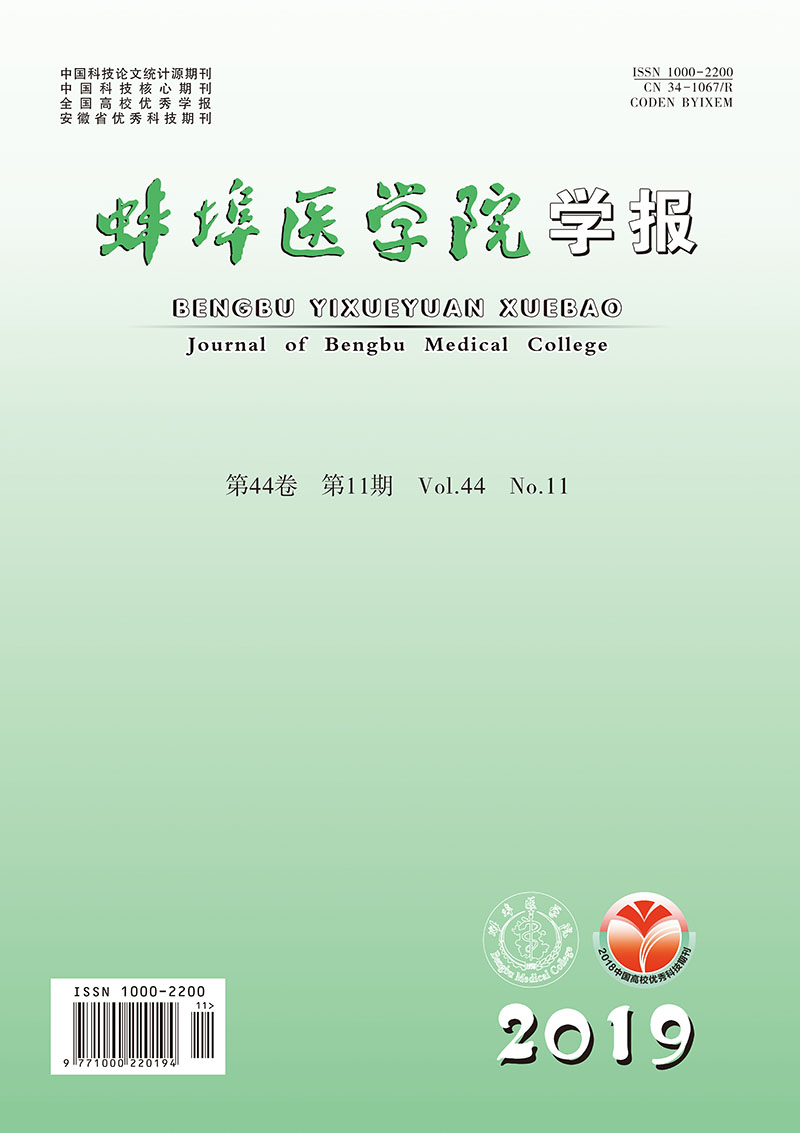-
社区获得性肺炎(community, acquired pneumonia,CAP)是指医院外感染性肺实质炎症,包括明确潜伏期的病体感染而在病人入院后平均潜伏期内发病的肺炎。重症CAP死亡率较高,是儿童常见病,在美国儿童死亡原因中位于第6位[1]。国内报道重症CAP死亡率为1%~5%,患儿平均住院率为12%。目前我国正在开展关于儿童重症CAP流行病学大规模调查,其相关详细资料需要进一步完善。重症CAP最常见病原体是肺炎支原体(MP),沙眼衣原体(CT)较少见,肺炎链球菌是其最常见细菌病原体,革兰阴性杆菌在CAP病原体的比例报道不一[2]。有报道[3]认为,革兰阴性杆菌是CAP常见致病菌,排第三。重症CAP临床表现主要取决于病原体及宿主状态[4],常见症状有咳嗽、发热、呼吸困难等。目前由于抗生素的滥用导致耐药菌不断增多。尽早进行痰液培养,明确病原或耐药性,选择合适的抗生素是提高治疗重症CAP疗效的重要方法。本研究选取徐州医科大学附属徐州儿童医院收治的重症CAP患儿,进行病原体检测及分析细菌耐药情况。现作报道。
HTML
-
选取徐州儿童医院儿科2017-2018年收治的重症CAP患儿1 014例,经排除后纳入450例作为研究对象。其中男321例,女129例,年龄1~13岁。1~ < 3岁289例,纳入幼儿组;3~ < 6岁111例,纳入学龄前组;≥6岁50例,纳入学龄组。幼儿组男219例,女70例;年龄1~3岁;病程4~18 d;患病季节:春季86例,夏季70例,秋季82例,冬季51例;病程检出病原体466株。学龄前组男71例,女40例;年龄3~6岁;病程4~15 d;患病季节:春季30例,夏季25例,秋季34例,冬季22例;检出病原体112株。学龄组男31例,女19例;年龄7~13岁;病程6~16 d;患病季节:春季18例,夏季8例,秋季17例,冬季7例,检出病原体54株。纳入标准:(1)年龄1~14岁;(2)符合CAP诊断标准[5];(3)重症肺炎参照儿童CAP管理指南(2013修订)[5],包括:意识障碍,胸片显示双肺叶受累,住院48 h内病灶变大,血压<90/60 mmHg,呼吸频率>30次/分,PaO2<60 mmHg。排除标准:(1)合并肺结核、哮喘等其他呼吸道疾病;(2)精神病患儿;(3)新生儿;(4)肺结核患儿;(5)非感染性肺炎患儿;(6)院内感染获得患儿;(7)严重免疫系统或内分泌系统患儿。
-
吸痰方法:所有病人入院24 h内0.9%氯化钠溶液清洗口腔,满意后使用一次性吸痰管吸取口腔内痰液,器械通气的患儿经气管插入导管装置吸取痰液。常规处理痰液标本后接种在培养皿内,5%CO2、35 ℃条件下培养24 h,菌种鉴定及药敏试验采用phoenix-100型全自动细菌鉴定系统,均参照美国实验室质量标准(2013CLSI)进行判断。病毒检测:利用分子生物学检查法来进行检测,以核酸阳性作为病毒标准。MP检测:使用荧光定量PCR技术检测痰液标本中MP。感染标准:MP-PCR>500 cps/mL为阳性。真菌检查:采用直接镜检法诊断菌丝与孢子。沙眼衣原体(CT)检测:CT-PCR采用荧光定量PCR技术检测,CT-PCR≥5×102基因拷贝/毫升提示CT感染。
-
采用χ2检验。
1.1. 一般资料
1.2. 方法
1.3. 统计学方法
-
450例患儿痰液中有389例检出病原体阳性,阳性率为86.44%。单纯细菌感染152例, 单纯病毒感染94例, 单纯MP感染5例, 单纯CT感染6例,混合感染132例,其细菌混合感染113例(见表 1)。
病原体 n 构成比/% 单纯细菌感染 152 39.07 单纯病毒感染 94 24.16 单纯MP感染 5 1.29 单纯CT感染 6 1.54 混合感染 132 33.93 细菌混合感染 103 78.03 病毒混合感染 17 12.88 细菌混合病毒 其他 12 9.09 真菌感染 10 1.58 -
389例阳性痰液共检出632种病原体,其中细菌354株,病毒225株,真菌10株,MP 18株,CT 25株,检出率分别为56.01%、35.60%、1.58%、2.85%、4.00%(见表 2)。
病原体 株数 占比/% 细菌 革兰阳性菌 肺炎链球菌 68 10.76 金黄色葡萄球菌 33 5.22 其他 6 0.95 革兰阴性菌 流感嗜血杆菌 172 27.22 大肠埃希菌 41 6.49 肺炎克雷伯菌 40 6.33 其他 15 2.37 病毒 呼吸道合胞病毒 104 16.46 腺病毒 65 10.28 流感病毒 30 4.75 副流感病毒 16 2.53 其他 10 1.58 真菌 10 1.58 MP 18 2.85 CT 25 4.00 -
痰液分析病毒、细菌、MP、CT、真菌感染在幼儿组、学龄前组、学龄组分布差异有统计学意义(P < 0.01),其中幼儿组的病毒、细菌、MP、CT感染最高,其次是学龄前组,最后是学龄组,学龄组真菌感染率最高(见表 3)。
分组 n 病毒(n=225) 细菌(n=354) MP(n=18) CT(n=25) 真菌(n=10) χ2 P 幼儿组 466 201(89.33) 241(68.08) 8(44.44) 10(40.00) 6(6.00) 学龄前组 112 14(6.22) 81(22.89) 6(33.33) 8(32.00) 3(3.00) 63.05 < 0.01 学龄组 54 10(4.44) 32(9.04) 4(22.22) 7(28.00) 1(10.00) -
春季、夏季、秋季、冬季的病毒、细菌、MP、CT、真菌感染分布差异有统计学意义(P < 0.01),其中冬季的病毒、细菌、MP、CT、真菌感染率最高。夏季细菌感、MP、CT染率位列第2位。春季真菌感染率位列第2位,夏季真菌感染率最低为0。秋季病毒感染率位列第2位,CT感染率最低,各季节混合感染差异无统计学意义(P>0.05)(见表 4)。
季节 n 病毒(n=225) 细菌(n=354) MP(n=18) CT(n=25) 真菌(n=10) 混合感染(n=132) χ2 P 春季 121 16(7.11) 95(26.84) 1(5.56) 5(20.00) 4(4.00) 32(24.24) 夏季秋季 134
9741(18.22)
65(28.89)74(20.90)
27(7.63)10(55.56)
3(16.67)9(36.00)
1(4.00)0(0.00)
1(1.00)30(22.73)
36(27.27)105.95 < 0.01 冬季 280 103(45.78) 158(44.63) 4(22.22) 10(40.00) 5(50.00) 34(25.76) -
痰液培养流感嗜血杆菌对氨苄西林完全耐药,对复方新诺明、头孢克洛高耐药(耐药率60.47%、65.12%),对阿莫西林耐药率为36.05%,对氧氟沙星低耐药。大肠埃希菌对氨苄西林、头孢呋辛高耐药(73.17%、83.37%),对亚胺培南、头孢克洛低耐药(见表 5)。
抗菌药物 流感嗜血杆菌
(n=172)大肠埃希菌
(n=41)氨苄西林 172(100.00) 30(73.17) 四环素 15(8.72) 8(19.51) 复方新诺明 104(60.47) 21(51.22) 头孢克洛 112(65.12) 1(2.44) 阿莫西林 62(36.05) 3(7.32) 氧氟沙星 15(8.72) 15(36.59) 头孢呋辛 — 35(83.37) 头孢噻肟 — 20(48.78) 头孢曲松 — 17(41.46) 舒巴坦 — 8(19.51) 亚胺培南 — 0(0.00) -
痰液培养肺炎链球菌对万古霉素、利奈唑胺、青霉素不耐药,对克林霉素、复方新诺明、红霉素及四环素高耐药(耐药率88.24%、75.00%、73.53%、70.59%),对阿莫西林低耐药。金黄色葡萄球菌对万古霉素、利奈唑胺不耐药,对克林霉素、青霉素、红霉素高耐药(87.88%、84.85%、72.73),对复方新诺明低耐药(见表 6)。
抗菌药物 肺炎链球菌
(n=68)金黄色葡萄球菌
(n=33)万古霉素 0(0.00) 0(0.00) 利奈唑胺 0(0.00) 0(0.00) 青霉素 0(0.00) 28(84.85) 红霉素 50(73.53) 24(72.73) 四环素 48(70.59) 15(45.45) 阿莫西林 9(13.24) 14(42.42) 克林霉素 60(88.24) 29(87.88) 复方新诺明 51(75.00) 4(12.12) 阿奇霉素 — 19(57.58) 氨苄西林 — 14(42.42)
2.1. 病原体阳性情况分析
2.2. 病原体构成情况分析
2.3. 不同年龄阶段一般资料及痰液病原体分布情况
2.4. 不同季节痰液病原体菌株分布情况分析
2.5. 痰液培养流感嗜血杆菌、大肠埃希菌对常规抗菌药物耐药情况分析
2.6. 痰液培养肺炎链球菌及黄色葡萄球菌对常规抗菌药物耐药情况分析
-
CAP是临床常见病,约有20%的病人需要住院治疗,其中17%为患儿[6]。因各国及地区的卫生医疗及社会因素不同,致使CAP住院治疗有差异,亚洲地区住院治疗率约为41%[7]。重症CAP界定原则主要以美国胸科疾病学会等CAP诊治标准,重症CAP病原学诊断结果能指导临床合理使用抗菌药物[8],减少用药不良反应,有助于医生判断患儿是否需要转换治疗方式,选择合适的治疗方案。目前国内不提倡对门诊重症CAP患儿进行病原学检查,但对住院重症CAP患儿仍主张进行病原学检查,特别是在使用抗菌药物前后收集患儿痰液检查病原,有利于医生判断预后。痰液病原学检查时间较短、简单易行,是目前国内医院最常用措施。重症CAP与年龄及气候有关[9]。其中主要因膈肌位置改变导致气道的净化功能降低,从而影响肺的天然防御机制。患儿年龄较小,生理功能尚未完全发育,细胞免疫功能较差,加之隐形误吸原因导致重症CAP发生。前期CAP症状不典型,重症活动期会出现意识障碍、活动障碍、大小便失禁、呼吸困难[10]、上呼吸道传导音强等临床特征,结合胸片结果极容易诊断。儿童重症CAP病情恢复缓慢,极容易出现合并症,死亡率较高,应该特别注意。有文献[11]报道,重症CAP病原菌感染以混合感染主,与本研究结果一致。大量混合感染会明显增加重症CAP患儿病原菌判断及临床药物选择的难度,以致治疗相对棘手,预后欠佳。
本研究患儿痰液标本中病原体阳性率为86.44%,可能与取痰、培养以及抗菌药物的运用有关。骆文龙等[12]研究认为,肺炎链球菌是重症CAP最常见菌种,其次是嗜肺军团菌,本研究结果显示流感嗜血杆菌为主要菌种。提示,CAP病原菌可能会随时间、地域、气候及病情的严重程度变化而变化。在区分致病菌或定植菌方面较困难,这可能会对研究结果产生一定影响。刘丽君等[13]研究结果中以金黄色葡萄球菌为主要感染菌种,肺炎链球菌检出率较低,提示该组大部分病人伴有糖尿病、脑血管疾病。年龄与季节影响CAP发生及发展。年龄越小、冬季是重症CAP危险因素。本研究中幼儿组及冬季的病毒、细菌、MP、CT、真菌感染最高,夏季真菌感染率最低。表明夏季重症CAP病原菌是真菌可能性较小,年龄小的儿童感染率高。临床应积极进行健康教育,工作需深入社区宣传预防CAP措施,减少感染率。郭玮等[14]认为MP是儿童重症CAP主要病原菌,这可能与儿童年龄小对病毒免疫低下有关。重症CAP患儿非发酵菌较多。目前医生常采用广谱抗菌药物多剂联合治疗重症CAP,经病原学检查及细菌耐药实验后会改用针对性、敏感性及相对狭窄的抗菌药物。流感嗜血杆菌对氨苄西林完全耐药,对复方新诺明、头孢克洛耐药率高,对氧氟沙星耐药低。大肠埃希菌对氨苄西林、头孢呋辛高耐药,对亚胺培南、头孢克洛低耐药。提示,流感嗜血杆菌及大肠埃希菌对β内酰胺酶抑制剂复方制剂敏感率较高,能作为治疗革兰阴性菌的经验性用药之一。肺炎链球菌对万古霉素、利奈唑胺、青霉素不耐药,对克林霉素、复方新诺明、红霉素及四环素高耐药,对阿莫西林低耐药。金黄色葡萄球菌对万古霉素、利奈唑胺不耐药,对克林霉素、青霉素、红霉素高耐药;表明流感嗜血杆菌感染患儿提倡使用对氧氟沙星治疗。大肠埃希菌感染患儿提倡使用亚胺培南、头孢克洛治疗。金黄色葡萄球菌感染患儿提倡使用万古霉素、利奈唑胺治疗。肺炎链球菌感染患儿提倡使用万古霉素、利奈唑胺、青霉素治疗。
综上所述,重症CAP患儿病原菌以细菌感染为主,其次是流感嗜血杆菌,有MP及真菌感染存在,要警惕混合感染。当前我院重症CAP患儿细菌耐药情况严峻,合理使用抗菌药物,后期针对病情变化及细菌培养及药敏实验结果调整抗菌药物,不可盲目升级抗菌药物,预防细菌耐药性发生。建议使用β内酰胺酶抑制剂复方制剂类药物。






 DownLoad:
DownLoad: